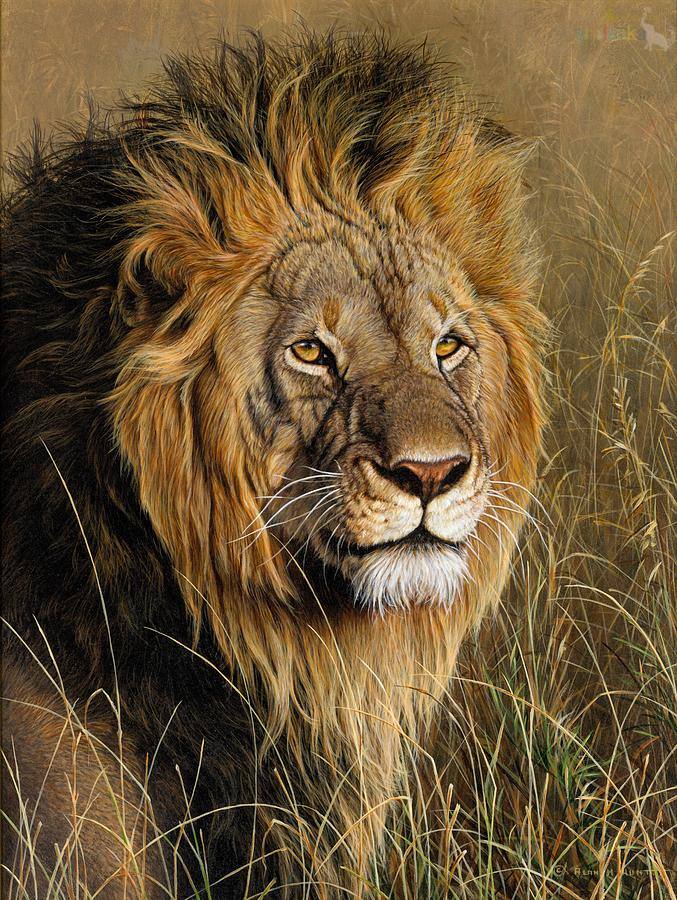The Story of the Sinhala Race

Truth Shrouded in Myth
By Ama H. Vanniarachchy
“A myth is far truer than a history, for a history only gives a story of the shadows, whereas a myth gives a story of the substances that cast the shadows.”
– Annie Besant
History is full of mysteries. We construct the past using the available material evidence we have, which were left behind by our ancestors, and by reading and interpreting the written documents of the past. We also interpret the folk songs, folk stories, and beliefs we have, as an attempt to understand our past.
On this walk into the unknown, full of darkness and mystery, we may encounter many myths and unbelievable stories that have shaped our culture and society. These myths, stories, and beliefs are hard to be proven through the material evidence we have, yet, we do not dismiss them with contempt. Such myths and legends are glorified in historical texts, folk culture, and arts and literature.
Such myths and legends are always involved with origin stories of races, religions, and civilisations. In such situations, those myths have given a feeling of empowerment, pride, and identity to those races or civilisations.
Truth or not, people tend to keep these stories in their hearts, and among their beliefs. As long as these beliefs are harmless to an individual as well as to society, there is no reason to worry. Also, there is a fine line between historical myths and modern pseudo archaeological stories; hence the two should not be mixed. Pseudo archaeological stories are vicious and have hidden agendas as we have discussed in detail during our previous Heritage segments, while historical myths and legends are a part of people’s intangible heritage. It is important to admire them for their beautiful stories, understand their symbolism, and how they have shaped our intangible cultural heritage.
The story we are going to tell you today is full of mystery yet is considered a truth deeply buried in time, covered in rusted myths, secrets, and darkness. It has shaped the story, the identity, and the culture of the people of this little island. This legend has given it’s name to the people of this island and has been known for many centuries as the origin story of the Sinhalese people. This legend has probably been the story behind the flag the Sinhalese used as their national flag since known historical times.
This is the legend of Sinhabahu or the origin story of the Sinhalese people. There are many similar legends around the world. The legend of the she-wolf who nurtured Romulus and Remus is a highly elaborated story in Roman mythology and plays an important role in Roman culture. There is a similar story in another Italian city of the Sienese people, which tells the story of twins who were nurtured by a she-wolf. This pair of twins is Senius and Aschius, the sons of Remus.
Descendants of a lion
Truth or not, the Sinhabahu story has embedded itself in the consciousness of the Sinhalese people deeply. To know more about this from a historical and archaeological perspective, we contacted senior archaeologist Professor Emeritus T.G.Kulatunga.
“This story was woven by the Pali chroniclers, who were Buddhist monks of the Mahavihara tradition. Such stories exist in many ancient civilisations.”
Lion as symbol of the Sinhala race
Lion as the national symbol
He explained that the lion being used as the symbol of the Sinhalese people may have a connection to this legend. Just as the peacock was the symbol of the Mauryans, a pair of fish was of the Pandyans, and the tiger of the Cholas, the lion has been the symbol of the Sinhalese for ages.
“Having animals as national or ethnic symbols has been an age old practice of humans,” he said.
While choosing an animal for this purpose, origin stories, myths, and religious significance played a significant influence. Therefore, Prof. Kulatunga believes that the Sinhabahu story has a link with this choice of the ancient Sinhalese.
When asked about the antiquity of this practice, he said that the oldest archaeological evidence to back this is a carving at Sanchi (the Southern gate) which shows a peacock and a lion, in a scene that depicts the arrival of Arhat Mahinda Thera to Sri Lanka. While the peacock symbolises Asoka and the Mauryans, the lion symbolises Devanampiyatissa and the Sinhalese.
The second evidence is a mention in the Sihalawattupakarana, which is an ancient text. One tale in this book says that Prince Dutugamunu wore gold earrings that had a lion symbol. The prince was recognised as the crown prince for his lion earrings.
The third notable piece of evidence is the Kandyan period painting at the Dambulla temple which shows King Dutugamunu’s flag as a lion flag, during the war against Elara. The lion flag still remains the national flag of Sri Lanka.
King Kasyapa created a gigantic lion at his abode at Sigiriya. The magnificent Lion Throne at Polonnaruwa is another evidence to prove that the lion was the symbol of Sinhalese royalty. The fearless lions at Yapahuwa are another example of this. Sinhalese kings of Anuradhapura issued lion coins.
Carvings of lions are found in abundance in Sri Lanka while in folklore, the lion is often compared to a mighty, brave, and noble-hearted person.
The Sinhabahu tale; narrated by Pali chroniclers
“The Pali chronicles narrate the story of the arrival of Vijaya in Sri Lanka. He was the son of Sinhabahu, the son of Sinha (the lion) who lived in the Vanga kingdom. This tale symbolises the Indo-Aryan migrations that occurred in Sri Lanka during early times”, explained Prof. Kulatunga.
“Indo-Aryans migrated to Sri Lanka a number of times. Vijaya’s story is the most notable migration that happened and probably the largest group of settlers that came to Sri Lanka. Hence it was given great importance by the chroniclers.”
The name Vijaya means ‘the victorious one’. This group was able to establish themselves as the most powerful group on the island and to establish their lineage as the country’s royal lineage that thrived for centuries.
What Fa-Hien writes
As Prof. Kulatunga explained the story recorded by the Chinese monk Fa-Hien is different from what the Pali chronicles say. Fa-Hien and the Pali chroniclers both lived in very close time periods, most probably during the same time. Fa-Hien resided at the Abhayagiri monastery and his writings echoed the stories he learned from the monks at Abhayagiri. He says that this island was inhabited by merchants who came in search of pearls and gems and prior to this, the island was home to many dangerous supernatural beings such as demons and dragons.
How Paranavitana analyses the stories
As Prof. Kulatunga explained to us, Prof. Paranavitana gives a rather rational and historically accurate explanation of this story. He explains that early traders or merchants travelled to Sri Lanka for the pearls and gems that were found here in abundance. Therefore, this island was in much demand among traders. The rumour that this island was inhabited by man-devouring demons, especially by she-demons, possibly was a story made up by traders who were competing with each other.
Prof. Paranavitana writes in his book, Sinhalayo, “As it has been with most people, the earliest accounts which the Sinhalese have preserved about their origin abound in myth and legend. These are of a totemistic nature and are recounted in chronicles written about the fifth century AC. He also says that, in spite of the incredible details with which they are embellished, these chronicles are generally accepted by scholars as furnishing evidence that people speaking an Indo- Aryan dialect migrated to Ceylon from North India about five centuries before the beginning of the Christian era.
He further says that the pioneers in introducing Indo-Aryan civilisation to this island were merchant adventurers, who were most probably attracted to the country’s pearl banks, and gems.
Talking about the many tales about Yakkas or Rakshas living in Sri Lanka during ancient times, Prof. Paranavitana says that these could be tales that were invented by pioneers who desired to keep the valuable merchandise from this island as a monopoly to themselves, by discouraging possible competitors from visiting its shores for fear of these superhuman monsters.
The story of Sinhala, the merchant who inhabited Ratnadeepa
Prof. Paranavitana and C.W.Nicholas write in A Concise History of Ceylon that the island of Ceylon was first inhabited by merchants, as per ancient texts. These texts tell a tale of a merchant called Sinhala. He was the son of Sinhala who lived in Sinhakalpa city. Sinhala arrived at Ratnadeep (the island of gems). The Sinhalese are the descendants of Sinhala.
Paranavitana and Nicholas say that the Sinhabahu story is clearly a fiction that was created to connect the origin of the people to a mythical lion and to establish the lion symbol of the people. They further say that there is a story similar to Vijaya and Kuweni in Greek mythology.
The historical truth of these folklore, legends, and myths is that merchants who arrived in Sri Lanka for their riches established an Indo-Aryan civilisation in this country. They spoke the Aryan dialect. This is proven through inscriptions.
However, Paranavitana further argues that the Sinhalese must have arrived from the northwest parts of India. He sees a link between these early settlers and Pakistan and Afghanistan. Also, the queen of Sumitta (Vijaya’s brother) was of Panjabi origin and the term ‘Gamini’ or ‘Gamani’ used by Sinhalese is a term used by the people of this region. He believes that these early settlers or the earliest ancestors of the Sinhalese are originally from the Gujarat area, on the banks of the Indus River.
Ajanta paintings of Sinhala
There are paintings at Ajanta that depict the arrival of an Indo-Aryan prince to Sri Lanka. His coronation is also painted at Ajanta. This is in cave number 17. It is believed that this depicts Sinhala and his arrival to Sri Lanka as king. This tale is similar to the Valahassa Jataka tale.
Lion remains in Sri Lanka
Although lions are extinct in Sri Lanka now, there have been discovered remains of lions that once lived in Sri Lanka.
This extinct species is known as the Sri Lankan lion (Panthera leo sinhaleyus), or the Ceylonese lion, which is a prehistoric subspecies of lion. Remains of this lion were found during excavation.
It is believed to have become extinct prior to the arrival of culturally modern humans, c. 37,000 years BCE.
The lion as the symbol of the Sinhalese
It could be assumed, based on the above-presented facts, that there had been a belief of a mythical or a heroic lion that is the ancestor of the Sinhala people who arrived in Sri Lanka. These people who lived on the banks of the Indus valley, in the Gujarat area, or in the regions of modern-day Pakistan and Afghanistan, were located close to the Persian Empire. Prof. Paranavitana says that the northwestern regions of India have been incorporated in the great Persian Empire; the first empire founded by a people of Aryan speech.
In ancient Iran (Persia and parts of the Parthian empire), the lion was a symbol of kingship and divine power. The ancient Persian symbol of a lion holding a sword which has been used by rulers for centuries as a flag/banner shows striking similarities to the lion in the national flag of Sri Lanka.
“When we lose our myths we lose our place in the universe.”
— Madeleine L’Engle
Prof. T.G.Kulatunga
The Story of Sinhala and his descendantsComing_Of_Sinhala_(Mural_At_Ajanta_In_Cave_No_17)The Story of Sinhala and his descendants
Consecration of King Sinhala(Detail_From The Ajanta_Mural of Cave no 17) By Photo Dharma from Sadao, Thailand
Uncategorized, Ama H.Vanniarachchy, Lion, Sinhabahu, Sinhala, Sinhala nationality, Sinhala people, Sinhala race, Sri Lankan archaeology, SRI LANKAN HISTORY
